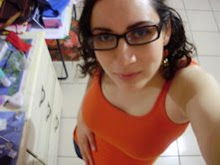
Example objectives:
Ex 1 (a grammar problems conference) "In this conference we'll look at the present perfect and you'll share problems you have with the structure with others".
Pilar. "
Share the problems is the first step, and then you have to find some explanations to be clear on any grammar structure In this case dont get confusse with other porblems,you just focus on one first and little by little you can ask for clarification, also the observation is a clue to understand, because when you listen and look at others you can reflects on your own work. Write down all your doubts to create an order list of grammar points.
Ex 2 (an opening message for a conference on teaching listening skills) "Hi, everyone. Welcome to this conference on teaching listening skills. What activities and techniques are there in the pre-listening phase of a lesson? How can we match the technique or activity to the kind of listening our learners will be doing? These are the questions you'll have an answer to in this conference. Join us!
Tony"
There are many questions about listening, It is important to know that students can get efectivness on listening skill. because, Listening comprehension is probably the most difficult task for students.
it is important to reamrk which problems can we find on listening skill:
-Translating creates a barrier between yourself and the person who is speaking. that is very common, we translate to our native language and then it could be a non effective communication or understanding.
According to Kenneth Beare,on The Challenge of Teaching Listening Skills.
http://esl.about.com/cs/teachinglistening/a/a_tlisten.htm
I like to use this analogy: Imagine you want to get in shape. You decide to begin jogging. The very first day you go out and jog seven miles. If you are lucky, you might even be able to jog the seven miles. However, chances are good that you will not soon go out jogging again. Fitness trainers have taught us that we must begin with little steps. Begin jogging short distances and walk some as well, over time you can build up the distance. Using this approach, you'll be much more likely to continue jogging and get fit. Students need to apply the same approach to listening skills.
inferring and guessing by watching a film it can be the most useful tool to encourage our students, identifying the main idea of the conversation , but also ACEEPT that as a humans we can not understand everything at the moment, even in our native language, we find diffulties when we listen to other people.
Now, as teachers we must put in practice our listening skills ( in our daily life), and take in consideration the variety of listening techniques according to the level of the Ss.
Ex 3 (an opening message for a conference on learning and practising vocabulary) "In this lesson, you'll find specific information on a website and you'll practise vocabulary about food and nutrition. Edith."
I´d already found a very illustrating material to present this topic.
http://www.eflnet.com/vocab/food_vocabulary.php
and i got an example of vocabulary from http://www.schoolvideos.com/tgs/H2040TG.pdf
Nutrition Vocabulary
Calcium : a mineral that helps to build
healthy bones and teeth
Carbohydrates : nutrients that provide the
body with a source of energy for work and play
Fat : a nutrient that provides energy and
carries some vitamins through the body
Fiber : a material that helps to move food
through the body
Iron :a mineral that helps keep the blood
healthy
Junk Food :food that is high in fat and sugar
and low in healthy nutrients
Nutrient : a food substance that is of value to
the human body
Protein : a nutrient that is needed for the
body to grow, stay healthy, and build and repair
muscle
Vitamin A : a nutrient found in dark green,
leafy vegetables, orange and yellow vegetables,
and some fruits, which is needed for healthy
hair, skin, and eyesight.
Vitamin C : a nutrient that helps the body
fight infection and stay healthy; it is found in
fruits, especially citrus fruits
Suggested activities:
- drawing of food pyramid, using magazines and pictures, students must be complete the pyramid with healthy food.
- Make a list of shopping, the students choose appropiatekind of food.
- discussion: talking about their favorite food and which they consider the best diet around the world, like french cousine, italian food, mexican food, fast food etc.

No comments:
Post a Comment